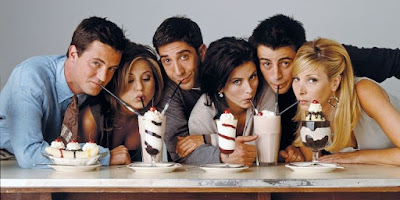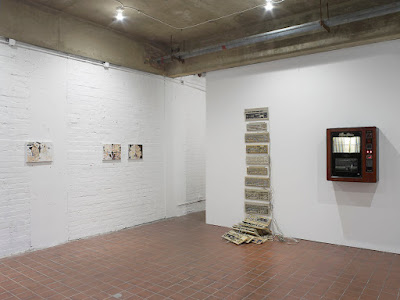It’s been a fun week in terms of progressing towards the degree show works. With regards to the mascot(s), we’ve decided on the final versions. We’re going to have one main mascot which will only exist as an image and then four which we will make into actual mascot costumes. The designer we’ve hired is excellent! He got back to us with so many great designs and it was near impossible to choose between them all. Eventually we managed to settle on 5 designs that one can see the connections between but aren’t necessarily totally the same. The ones we’re going to make into mascots are more like characters from a TV show or designs for a cuddly toy whereas the one which is only going to be a drawing is much more business-y and does resemble a chameleon/human crossover which is what we were interested in from the beginning; an animal that is adaptable to multiple situations and therefore is a generic business logo – doesn’t mean anything specific and therefore be attached to anything. We’ve printed them out small and stuck them onto cardboard to get a sense of what it might be like to have a giant cut out and it looks pretty exciting!
We’ve done a bit more research into what we’re trying to explore with the information stand. Since we spent all this time doing our dissertation and researching how films tell stories and how artist use those techniques to tell their own stories, we thought it may be useful to employ this knowledge in making this piece. Obviously, it’s slightly different due to the fact that we’re not making a film but there are still aspects which feel appropriate to consider. The idea of props is still very present as one could describe this work as a prop and could very easily function as one. Language is also something which needs to be explored with this work as there’s going to be plenty of writing in the leaflets. How well we take on that language, both visual and written, of an information stand will dictate the success of the work.
In terms of physical, fictional world building, we’ve been looking into Gregor Schneider, in particular his Art Angel commission, Die Familie Schneider which consisted of two neighbouring, identical houses in a very ordinary street in Whitechapel. This occurred in 2004 so obviously we we’re able to visit ourselves but from the numerous account we’ve read and heard we’ve come to the conclusion that this work is difficult to think about as an illusion, even a theatrical illusion. It existed on an equal level with reality, so much so that it became a reality in itself. Adrien Searl even writing that he had to keep reminding himself that that it was an artwork. This is more of a horror film sort of vibe; in many horror films the truly unsettling sequences come near the beginning. Before the axe murderers start chopping, the cannibal zombies start munching and the malevolent forces of cheap special effects are unleashed on the world, the unknown, unexpected and unpredictable form the advance party of fear. You have a sense of what’s to come but it hasn’t revealed itself yet. It’s that potential that we want to harness.
The same goes for the work of Mike Nelson; encouraging visitors to spend time inhabiting worlds that, while foreign on the surface, reveal intrinsic truths and modes of thought that affect even the most basic cultural activities.
Finally, with regards to the physical world building we have Ryan Gander, more specifically his own Art Angel commission Locked Room Scenario, this immersive group show of fictional artists in a Hoxton warehouse, which invited the viewer to adopt a detective’s mentality.
Oh we nearly forgot Ilya and Emilia Kabakov! A new favourite in our artist reference arsenal. They also produce these large-scale installations use fictional personas. Even though their stuff is clearly very political we’re more excited by their universal ideas of utopia and fantasy; hope and fear.
That idea of fantasy brought us to a whole new range of thoughts. We went down a slightly strange path for us, drawing. Even though we know this isn’t going to feature in an obvious way but notions of fantasy seem highly applicable. The drawn fantasies of Paul Noble, Charles Avery, and Mathew Ritchie give them all variety of titles from architect and town planner, archaeologist and cartographer, social historian and activist, creator and destroyer. These works aren’t just vividly realised fictions but they’re also a petri dish in which they’re testing ideas from their areas of interest. The similarities between all these are that they’re teeming with sights both strange and strangely familiar.
However, this continues to build a physical world, and we’re most intrigued by allowing the viewers/visitors to create their own world. To quote Inception, (they) are the dreamer, (we) are the subject. (Their) subconscious populates (our) world. This is where we get more into the language aspect of the work, which we were discussing earlier, we’ve looking to more fictional books since we tend not to exclusively read non-fiction unless we’re on holiday. We realised that what we’ve been describing is highly related to magical realism; what happens when a highly detailed, realistic setting is invaded by something too strange to believe. We’ve started reading Julio Cortázar’s All Fires the Fire and Other Stories and are loving working our way through it; the stories in All Fires The Fire are warm and the characters are treated with real tenderness. We’ll report back once we have more information.
In terms of physicality, we’ve produced a couple of maquettes and SketchUp drawings to make sure what we’ve been drawing actually makes sense in the real world and it’s looking great! Hopefully the actual production will go just as smoothly…























































